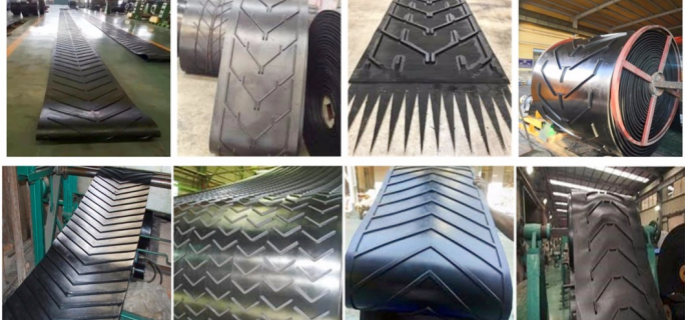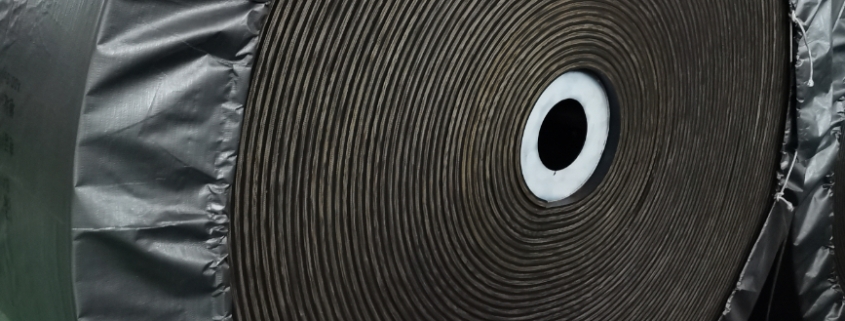Conveyor belt scale accuracy is crucial in industrial applications where precise measurement of material flow is essential. Accurate scales ensure that processes are efficient, costs are controlled, and regulatory compliance is maintained. This section provides an overview of why conveyor belt scale accuracy is vital across various industries. For those seeking in-depth information, a comprehensive PDF guide is available for download, offering detailed insights and practical advice on maintaining and improving accuracy in conveyor belt scales.
Read moreChevron belt conveyor design is a specialized configuration used in various industries to enhance the movement of materials, especially on inclined surfaces. The chevron pattern, characterized by its V-shaped cleats, provides improved grip and stability, ensuring efficient material transport. This design reduces slippage and increases load capacity, making it ideal for handling bulk materials like coal, gravel, and agricultural products. For a comprehensive understanding of the principles and benefits of chevron belt conveyor design, a detailed PDF guide is available for download, offering in-depth insights and practical applications.
Read moreThe chevron conveyor belt pattern is widely recognized for its distinctive V-shaped design, which enhances grip and material movement. This pattern is particularly useful in applications where incline or decline angles are involved, as it prevents materials from slipping or rolling back. Chevron conveyor belt patterns are extensively used in industries such as mining, agriculture, and construction, where efficient and reliable material handling is critical. These belts are made from high-quality rubber, ensuring durability and resistance to wear and tear. The unique pattern not only improves performance but also extends the lifespan of the conveyor belts in demanding environments.
Read moreTransition idler belt conveyor systems are crucial components in many industries, ensuring smooth and efficient transportation of materials. These systems are designed to bridge the gap between different conveyor segments, allowing for changes in direction, height, or width. Transition idlers play a vital role in maintaining the belt’s alignment and preventing material spillage, which can lead to reduced downtime and increased productivity. By supporting the belt during transitional phases, transition idler belt conveyors help to minimize wear and tear, extend the lifespan of the conveyor system, and ensure continuous, reliable operation in various industrial applications.
Read moreTraining idlers belt conveyor systems play a crucial role in ensuring smooth and efficient operation. These specialized idlers are designed to automatically correct any misalignment of the conveyor belt, thereby preventing potential damage and reducing maintenance costs. Proper alignment of the belt is essential to prevent spillage, material loss, and wear and tear on the conveyor system. By using training idlers belt conveyor systems can maintain optimal performance, ensuring that the belt remains centered on the idlers and runs smoothly along its designated path. This not only enhances the longevity of the conveyor belt but also improves overall operational efficiency.
Read moreImpact idlers are used in a belt conveyor to absorb impact at loading points and prevent damage to the conveyor belt. These specialized idlers are designed with shock-absorbing rollers to handle the heavy loads and sudden impacts from materials being loaded onto the conveyor. By cushioning the load, impact idlers enhance the longevity and efficiency of the conveyor system, reducing maintenance costs and downtime. Understanding how impact idlers are used in a belt conveyor is crucial for optimizing the performance and durability of the entire material handling system. Proper selection and maintenance of these idlers ensure smooth and reliable conveyor operations.
Read moreWhen exploring the intricacies of belt conveyor systems, a common question arises: what is idler in belt conveyor? Idlers are pivotal components that play a crucial role in the functionality and efficiency of these systems. Positioned strategically along the conveyor structure, idlers provide the necessary support for the conveyor belt and the materials it transports. They come in various types and configurations, each designed to meet specific operational requirements and ensure smooth, uninterrupted material flow.
Read moreThe FMC link belt conveyor idlers manual provides comprehensive guidelines for the proper installation, operation, and maintenance of idlers. This essential manual includes key sections on safety protocols, detailed diagrams of idler components, and step-by-step installation instructions. Using the FMC link belt conveyor idlers manual ensures that your conveyor system operates efficiently and reliably, minimizing downtime and extending the lifespan of your equipment. By following the manual, operators can perform routine maintenance effectively and troubleshoot common issues with ease.
Read moreSyntron link belt conveyor idlers are integral components in material handling systems, designed to support and guide conveyor belts efficiently. These idlers are known for their durability, reliability, and ease of maintenance. Key features of Syntron link belt conveyor idlers include robust construction, low rolling resistance, and enhanced load-carrying capacity. They are widely used in industries such as mining, aggregate, and bulk material handling, ensuring optimal performance and longevity. By incorporating Syntron link belt conveyor idlers into their systems, companies can achieve increased operational efficiency and reduced maintenance costs.
Read moreUnderstanding the importance of idler spacing in belt conveyors is crucial for efficient operation and longevity of the system. The idler spacing belt conveyor PDF provides detailed guidelines and best practices for determining the optimal spacing between idlers. Proper idler spacing ensures smooth material transport, reduces wear and tear on the belt, and enhances overall system performance. This comprehensive guide is an essential resource for engineers and operators looking to optimize their conveyor systems.
Read moreContact us
No. 11, Bocheng Street, Boye County, Baoding City, Hebei Province, China
+86 13803289191
NEWS
 How a Multi Ply Conveyor Belt Enhances EfficiencyJune 18, 2024 -
How a Multi Ply Conveyor Belt Enhances EfficiencyJune 18, 2024 - What is Conveyor Belt Ply and Conveyor Belt Ply AdhesionJune 18, 2024 -
What is Conveyor Belt Ply and Conveyor Belt Ply AdhesionJune 18, 2024 - Necessary Cold Resistant Conveyor BeltJune 18, 2024 -
Necessary Cold Resistant Conveyor BeltJune 18, 2024 -









